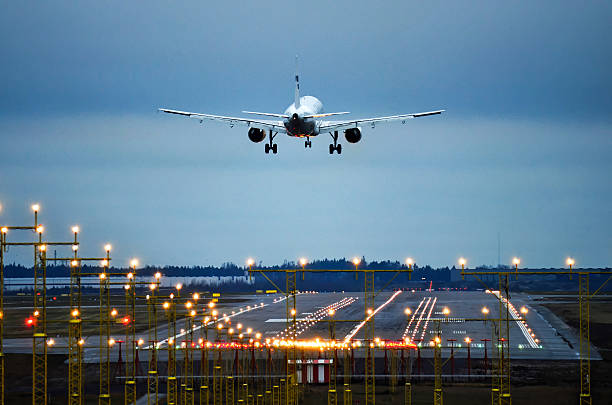1} JOMO KENYATTA INTERNATIONAL AIRPORT
Jomo Kenyatta International Airport (JKIA) stands as Kenya’s largest and busiest airport, serving as a critical gateway to the East African region and beyond. Named after Kenya’s first president, Jomo Kenyatta, the airport is situated in Nairobi, the capital city. Its strategic location positions it as a key hub for both domestic and international flights.
With a rich history dating back to its establishment in 1958, JKIA has undergone significant expansions and upgrades to meet the growing demands of air travel. The airport plays a pivotal role in connecting Kenya to various global destinations, fostering international trade, tourism, and diplomatic relations.
Its modern facilities and infrastructure contribute to its reputation as a major aviation center in East Africa.JKIA boasts multiple terminals dedicated to different types of flights, including domestic, regional, and international.
The airport’s passenger terminals are equipped with state-of-the-art amenities, ensuring a seamless travel experience for millions of passengers annually. Additionally, it facilitates the efficient movement of cargo, promoting trade and commerce in the region.
The airport serves as a hub for Kenya Airways, the national carrier, enhancing connectivity and making Nairobi a central point for connecting flights. This connectivity not only benefits Kenya’s economy but also strengthens its position in the global aviation landscape.Furthermore, JKIA prioritizes safety and security, implementing stringent measures to ensure the well-being of passengers and cargo.
It adheres to international aviation standards, making it a reliable and trusted transit point for travelers. Jomo Kenyatta International Airport stands as a vital aviation hub in East Africa, contributing significantly to Kenya’s economic development, international connectivity, and overall prominence in the global air travel network. Its continuous growth reflects the country’s commitment to maintaining a world-class aviation infrastructure.
2} MOI INTERNATIONAL AIRPORT
Moi International Airport, located in Mombasa, Kenya, stands as one of the country’s prominent aviation hubs, playing a pivotal role in connecting Kenya to the global network of air travel.
Named after Kenya’s second president, Daniel arap Moi, the airport has evolved into a major gateway for both domestic and international flights.With its strategic location along the eastern coast of Africa, Moi International Airport serves as a crucial link for tourists, business travelers, and cargo shipments.
Its significance is not only derived from its size but also from its comprehensive facilities and services. The airport boasts modern terminals equipped with state-of-the-art technology, ensuring a smooth and efficient passenger experience.
As a key player in Kenya’s aviation infrastructure, Moi International Airport facilitates economic growth by fostering trade and tourism. Its international status enables airlines from various countries to operate flights, promoting global connectivity.
This, in turn, contributes to Kenya’s economic development by attracting foreign investment and fostering cultural exchange.The airport serves as a vital hub for Kenya Airways, the national carrier, enhancing its connectivity and enabling seamless transfers for passengers.
The presence of multiple airlines, both domestic and international, contributes to healthy competition, leading to improved services and options for travelers.Furthermore, Moi International Airport contributes significantly to employment opportunities in the region.
The diverse range of jobs created includes positions in aviation services, security, hospitality, and retail within the airport premises. This economic impact extends beyond the airport, positively influencing the surrounding communities. Moi International Airport stands as a cornerstone of Kenya’s aviation landscape, fostering economic growth, promoting global connectivity, and providing essential services to both domestic and international travelers.
Its role extends beyond being a physical transportation hub, contributing to the overall development and prosperity of the region and the nation.
3} KISUMU INTERNATIONAL AIRPORT
Kisumu International Airport, situated in Kisumu, Kenya, stands as one of the prominent aviation hubs in the country. Its significance lies not only in its strategic location but also in its role as a vital gateway for domestic and international air travel.
The airport’s expansive infrastructure accommodates a large volume of passenger and cargo traffic, contributing significantly to Kenya’s connectivity and economic activities. As one of the major airports in the region, Kisumu International plays a crucial role in fostering tourism, trade, and investment by providing efficient air transport services.
The airport’s terminals are equipped with modern facilities and amenities, ensuring a seamless and comfortable experience for travelers.
With a well-designed layout, it efficiently handles both domestic and international flights, serving as a key transit point for various destinations. This connectivity enhances Kisumu’s accessibility and promotes economic growth in the surrounding areas.


Furthermore, Kisumu International Airport serves as a vital link for the export and import of goods, facilitating trade and commerce. The cargo handling capabilities contribute to the region’s economic development by expediting the movement of goods and supporting businesses that rely on timely transportation.
The airport’s strategic importance extends beyond its physical infrastructure; it serves as a symbol of Kenya’s commitment to advancing its aviation sector. Investments in technology, security, and sustainable practices further establish Kisumu International as a modern and progressive aviation facility.
Kisumu International Airport’s stature as one of Kenya’s biggest airports is a testament to its multifaceted contributions to the nation’s economic development, tourism, and global connectivity. Its strategic location, modern facilities, and efficient operations collectively position it as a key player in the aviation landscape of Kenya.
4} MALINDI AIRPORT
Malindi Airport, located in the coastal town of Malindi, stands as a prominent aviation hub in Kenya, contributing significantly to the country’s air transportation infrastructure. While it may not be the largest airport in the nation, its strategic importance and steady growth position it as a key player in the region.
Malindi Airport serves as a gateway to the popular tourist destination of Malindi and the surrounding coastal areas, playing a crucial role in facilitating both domestic and international travel. Its geographical location enhances connectivity to various destinations, fostering economic and tourism-related activities.
The airport’s runway and terminal facilities have undergone expansions and upgrades, accommodating larger aircraft and handling increased passenger traffic.The airport plays a pivotal role in supporting the region’s tourism industry, serving as a convenient entry point for visitors exploring Kenya’s coastal attractions, including pristine beaches and wildlife reserves.
This connectivity contributes to the economic development of the coastal region by promoting tourism-related businesses, creating job opportunities, and boosting local commerce.Additionally, Malindi Airport serves as a vital link for trade and commerce, facilitating the transportation of goods to and from the coastal region.
Its efficient cargo handling capabilities contribute to the overall economic development of not only Malindi but also the neighboring areas.The airport’s importance extends beyond its physical infrastructure; it serves as a symbol of Kenya’s commitment to advancing its air transportation sector.
Collaborations with airlines, government agencies, and international partners contribute to the airport’s ongoing development, ensuring it remains a reliable and efficient node in the country’s aviation network. Malindi Airport may not be the largest in Kenya, its strategic location, role in tourism, and contribution to economic development position it as a significant player in the nation’s aviation landscape.
As it continues to evolve and meet the demands of a growing region, Malindi Airport exemplifies the dynamic nature of Kenya’s commitment to advancing its air transportation capabilities.
5} WILSON AIRPORT
Wilson Airport, located in Nairobi, Kenya, holds a prominent position as one of the country’s significant aviation hubs. While not the largest in terms of passenger traffic, Wilson Airport distinguishes itself through its crucial role in supporting various aviation activities, especially in the realm of general aviation, private flights, and cargo operations.
Established in 1929, Wilson Airport has a rich history and has evolved to become a vital component of Kenya’s aviation infrastructure. The airport plays a pivotal role in supporting domestic flights, connecting Nairobi with various destinations across the country.
Its strategic location ensures convenient access for travelers and businesses, contributing to the overall connectivity of the nation.One of Wilson Airport’s key strengths lies in its focus on general aviation. It serves as a hub for private and charter flights, catering to the needs of individuals, corporations, and organizations requiring efficient and flexible air travel solutions.
This emphasis on general aviation fosters economic activities, facilitates tourism, and supports industries that rely on swift and direct aerial access.Moreover, Wilson Airport serves as a critical gateway for medical and humanitarian flights.
Its location and facilities enable rapid response to emergencies, facilitating the transportation of medical personnel, supplies, and aid to various parts of Kenya and beyond.In terms of cargo operations, Wilson Airport plays a crucial role in the transportation of goods within the country. Its facilities support air freight, enabling the swift movement of perishable goods, time-sensitive cargo, and other essential supplies.
This contributes significantly to Kenya’s trade and commerce, enhancing economic development.Despite its smaller scale compared to international airports, Wilson Airport’s multifaceted contributions make it a cornerstone of Kenya’s aviation landscape.
Its role in supporting diverse aviation activities, from general and private aviation to cargo operations and emergency response, solidifies its position as a key player in the nation’s air transportation network.
